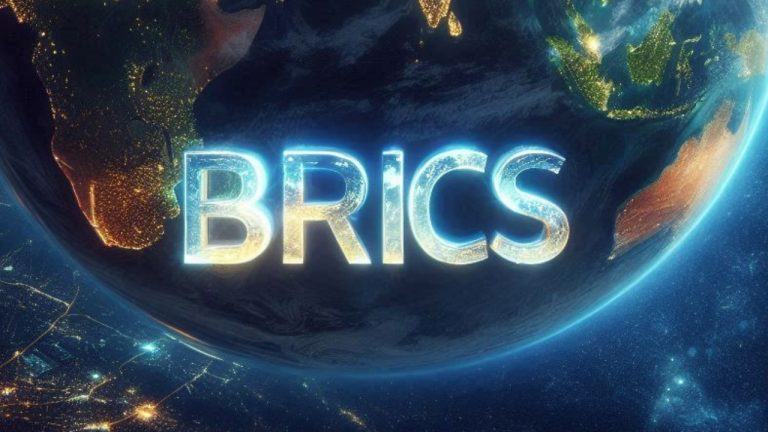Q/A with Christian Seifert of Forta about the future of Web3 cybersecurity in 2023
Q: Why is cybersecurity becoming increasingly important in today’s world, especially from a Web3 standpoint?
A: Digital data compromises have been rising at an unprecedented rate over the last few years. To this point, during 2022 alone, a little over 4,100 publicly disclosed data breaches were witnessed, resulting in more than 22 billion sensitive consumer records being exposed. Not only that, conservative estimates suggest that cybercrime-related incidents will amount to $10.5 trillion per annum within the next 24 months.
Even when it comes to the Web3 arena, such breaches have been soaring. For example, a recent report suggests that $3.7B was lost to hacks in 2022, a 58% increase in comparison to the year prior. In fact, in October 2022, a staggering $718 million was illegally siphoned off from various DeFi platforms. These startling figures have resulted in most cybersecurity experts, including myself, believing that over the coming few months and years, we will need to harness the power of future-ready technologies like artificial intelligence (AI) and machine learning (ML) since they can alleviate many of today’s most pressing digital security problems.
Q: How will the growth of Web3 technology impact the future of cybersecurity and where do you see Forta positioning itself within this rapidly evolving paradigm?
A: As Web3 systems become more widely adopted, there will be greater demand for high-quality cybersecurity protocols, particularly those that are designed for decentralized technologies. This will require new approaches to security that take into account the unique challenges posed by such non-local networks, such as the need for more robust smart contract security, enhanced privacy protection, etc. In fact, most of these aspects can be seamlessly tackled via the incorporation of machine learning and other AI-related tech tools.
Forta is the world’s first decentralized monitoring network capable of weeding out digital threats and anomalies affecting the Web3 space (including niches like DeFi, NFTs, interoperability bridges, and more) in real-time. The project utilizes the power of an underlying decentralized network which is made up of several independent node operators (estimated to be over 12 thousand), each of whom is incentivized to scan every single transaction taking place within the Web3 economy. In fact, I should point out that Forta currently has 40 major protocols, such as Maker, Compound, Lido, dYdX and Balancer, making use of its threat detection services.
Q: What are some of the key challenges in ensuring the security of Web3 systems? What is Forta doing to help mitigate some of these issues?
A: Some of the key challenges pervading the Web3 ecosystem today include the decentralization of data and control as well as the complex nature of these systems. Additionally, the open nature of decentralized platforms makes them more vulnerable to third-party intrusions and other malicious activities, which requires effective security measures to be in place to prevent attacks before they can even occur.
Forta’s native operational framework affords users the ability to harness the power of machine learning, making its use case possibilities virtually limitless. For example, the platform’s data feeds can be utilized for monitoring Web3 activities in real-time, that too in a block-by-block manner. Moreover, Forta uses the power of digital modules like transaction simulators, anomaly detectors, and multi-chain monitoring systems, making it is possible to prevent attacks or at least curb them as soon as they arise. Not only that, Forta’s decentralized network of nodes — aligned and powered by economic incentives — provides users with an unparalleled level of operational dependability and reliability.
Q: What role will machine learning/ AI play in the future of Web3 cybersecurity?
A: First things first, the total capitalization of the AI cybersecurity market — of which ML is a major subset — is estimated to expand at a CAGR of nearly 25% over the next half a decade, scaling up to a cumulative total of $46.3B by 2028. This is because ML-based systems can arm security experts with several potent tools needed to identify problems as well as utilize large volumes of data, which is not possible with simple human accounting. Lastly, the technology also enables users to devise tools that do not have an innate bias.
To put it another way, ML-based security platforms stand to completely transform the heuristic processes of yesteryears by not only making them more efficient but also devoid of any human errors.
Q: How will the growth of decentralized finance (DeFi) impact the security of Web3 systems? What is Forta doing on this front?
A: The DeFi market is continuing to expand rapidly, however, as with any new technological niche, it too has been afflicted by a growing number of security problems. For example, DeFi losses have surged by a whopping 56.2% from over $2 billion to $3.18 billion between 2021 and 2022. Thus, whether one likes it or not, this space will continue to have a profound impact on the security of the Web3 ecosystem at large, requiring the implementation of more robust security measures to protect users from any external threats.
To this point, over the last couple of years, Forta has extended its scope of operations to a number of popular Layer-1 and Layer-2 networks that are used by DeFi enthusiasts globally, providing them with runtime monitoring and anomaly detection data capabilities in relation to projects like Ethereum, Avalanche, Polygon, BNB Chain, etc. As things stand, Forta protects more than $21B worth of total value locked (TVL) across several major DeFi protocols.
Q5. What are some of the key challenges impeding the implementation of machine learning within today’s rapidly evolving Web3 landscape?
A: First off, It is important to recognize that a majority of today’s ML platforms are driven by data scientists, a substratum of security experts who have yet to truly enter the Web3 arena. This is extremely unfortunate since this burgeoning tech paradigm has so much information readily available for analysis, potentially paving the way for numerous research opportunities as well as for the resolution of various real-world problems.
In my view, it is extremely important that the industry makes itself more attractive to data scientists, firstly by educating them about the underlying technology (i.e. blockchain) and secondly by providing them with lucrative incentives.
Q: What are some of the privacy concerns associated with Web3 technology and how can they be addressed?
A: To begin with, decentralized systems can collect and store large amounts of personal data, which may provide bad actors with an avenue through which they can illegally track the activity of unsuspecting users. To address these concerns, various tools can be employed, including ML-based detection systems, zero-knowledge proofs, secure multi-party computation platforms, etc.
Focusing on ML in particular, Forta helps make today’s existing cybersecurity systems more secure and reliable. For example, it helps ascertain third-party threats and anomalies, identifies irregular patterns, eliminates bots, and manages/handles the security/behavioral analytics of its associated platforms seamlessly.
Q: What are some of the key components of a comprehensive security strategy that Web3 systems should adopt in 2023?
A: Over the coming year or so, I believe an increasing number of Web3 platforms will start using independent auditors to secure their systems while also adopting other techniques, such as bug bounties. Moreover, I see more and more protocols employing real-time monitoring services so as to mitigate attacks in real time as well as bolster their incident response capabilities.
Lastly, it is quite likely that in 2023 we will see the widespread use of upgradable smart contracts as well as the rise of cyber insurance schemes.
The post Q/A with Christian Seifert of Forta about the future of Web3 cybersecurity in 2023 appeared first on CryptoMode.






